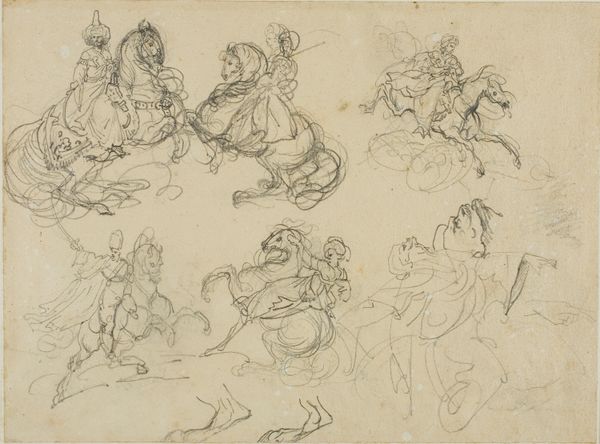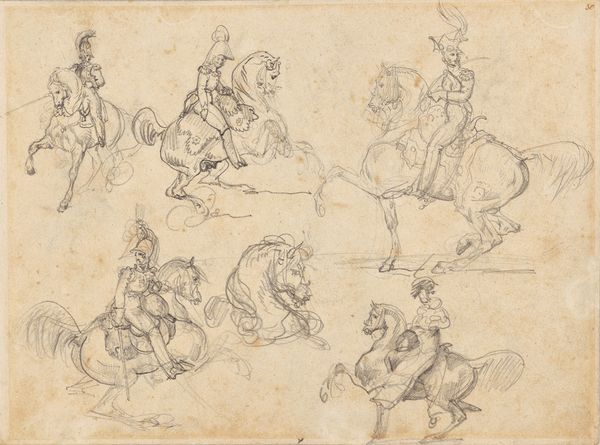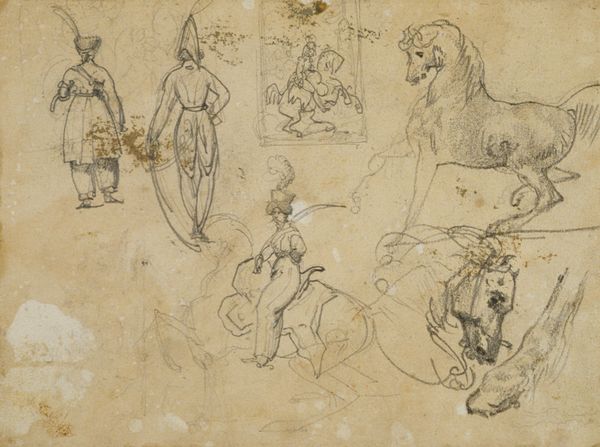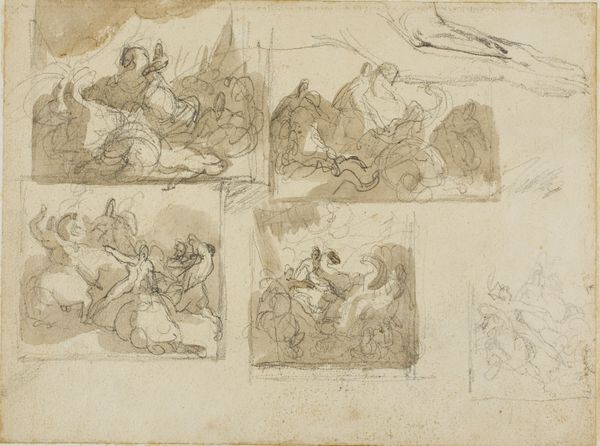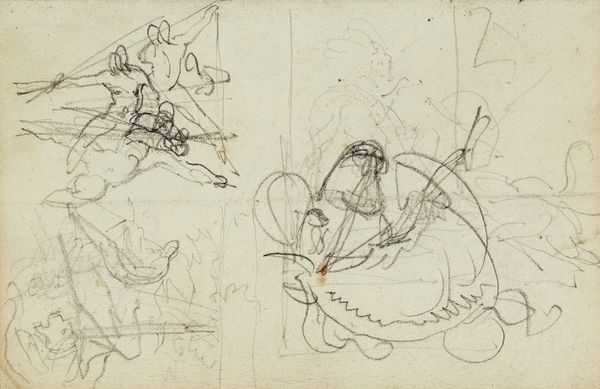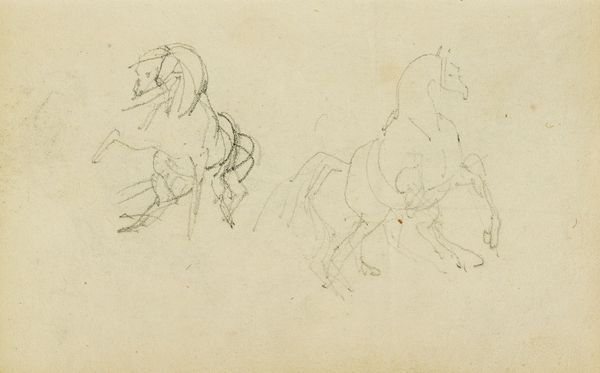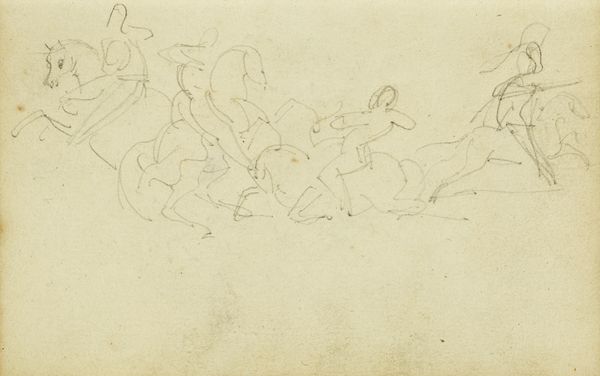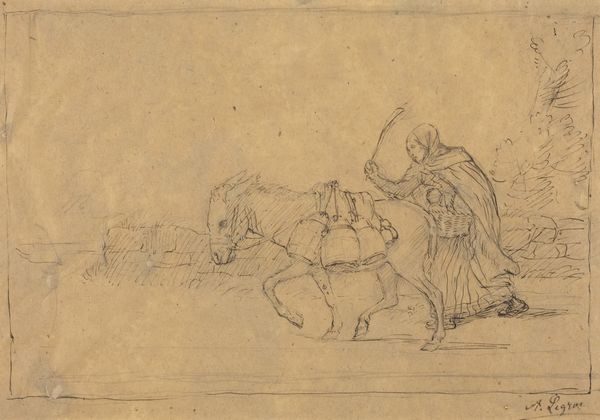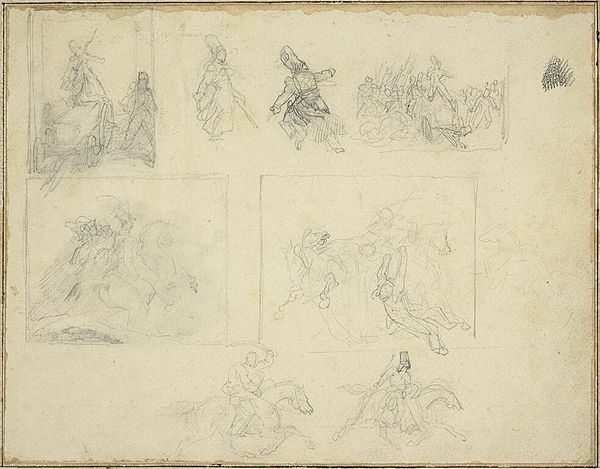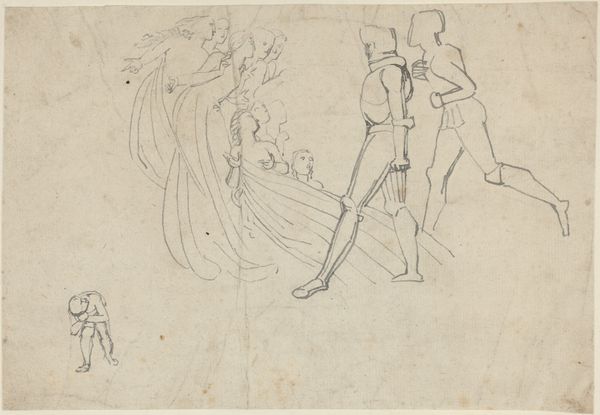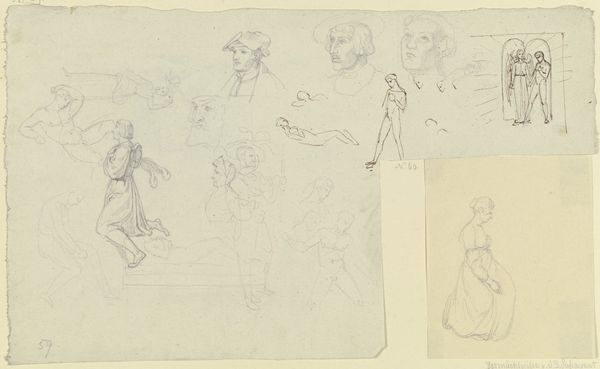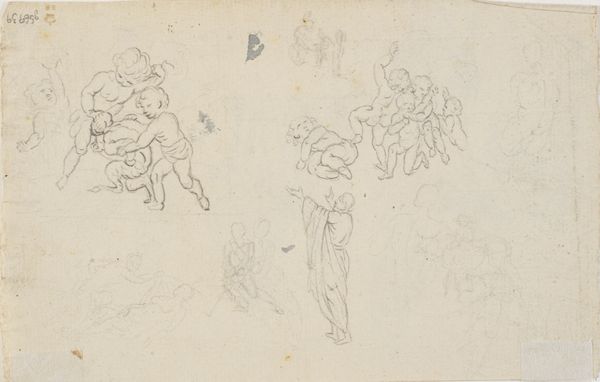
Sketches of Mounted Carabiniers and Heads of Horses 1813 - 1814
0:00
0:00
drawing, print, paper, graphite
#
portrait
#
drawing
# print
#
pencil sketch
#
landscape
#
figuration
#
paper
#
romanticism
#
graphite
Dimensions: 174 × 232 mm
Copyright: Public Domain
Curator: Today we are observing "Sketches of Mounted Carabiniers and Heads of Horses", rendered between 1813 and 1814 by Théodore Géricault. Executed with graphite on paper, this work currently resides at the Art Institute of Chicago. Editor: It strikes me immediately as a restless exploration, a dynamic study of figures in motion, even fragmented as they are. Curator: Indeed, the composition favors multiplicity and repetition. Note the structural rhythm established by the strategic placement of each figure across the page—repetition is not merely duplication, but rather nuanced reiteration, pushing toward the essence of form. Editor: I see that too, but can't ignore how the military subject matter invokes the socio-political upheaval of the Napoleonic era. Horses become stand-ins for the violence and relentless power dynamics of the period, don’t you think? They embody the burden carried by soldiers, and their frequently brutal experiences. Curator: Of course, the historical backdrop is vital. Yet, it is the interplay of line, mass, and negative space that truly defines this work. The formal arrangement of lines establishes depth—with figures seemingly emerging from the pictorial plane. See how Géricault masterfully renders depth without resorting to overt shadowing techniques. Editor: But this conscious artistic decision highlights more vividly the detachment of soldiers from conventional civilian existence; that this existence only persists on a two-dimensional field, like a staged play lacking organic grounding in a true, fertile home. Curator: An astute reading! The Romantic spirit is undeniably present here, reflected through Géricault's choice of subject and frenetic energy. We recognize echoes of conflict and the heroic, tempered, naturally, with individual struggle. Editor: This offers more than just technical mastery or historical context; it fosters emotional understanding of people affected by historical tensions. Curator: I agree. Understanding both its formal qualities and its historical relevance invites a deeper appreciation. Editor: Absolutely, let’s consider the narratives we construct around pieces like this when understanding our present situation.
Comments
No comments
Be the first to comment and join the conversation on the ultimate creative platform.
